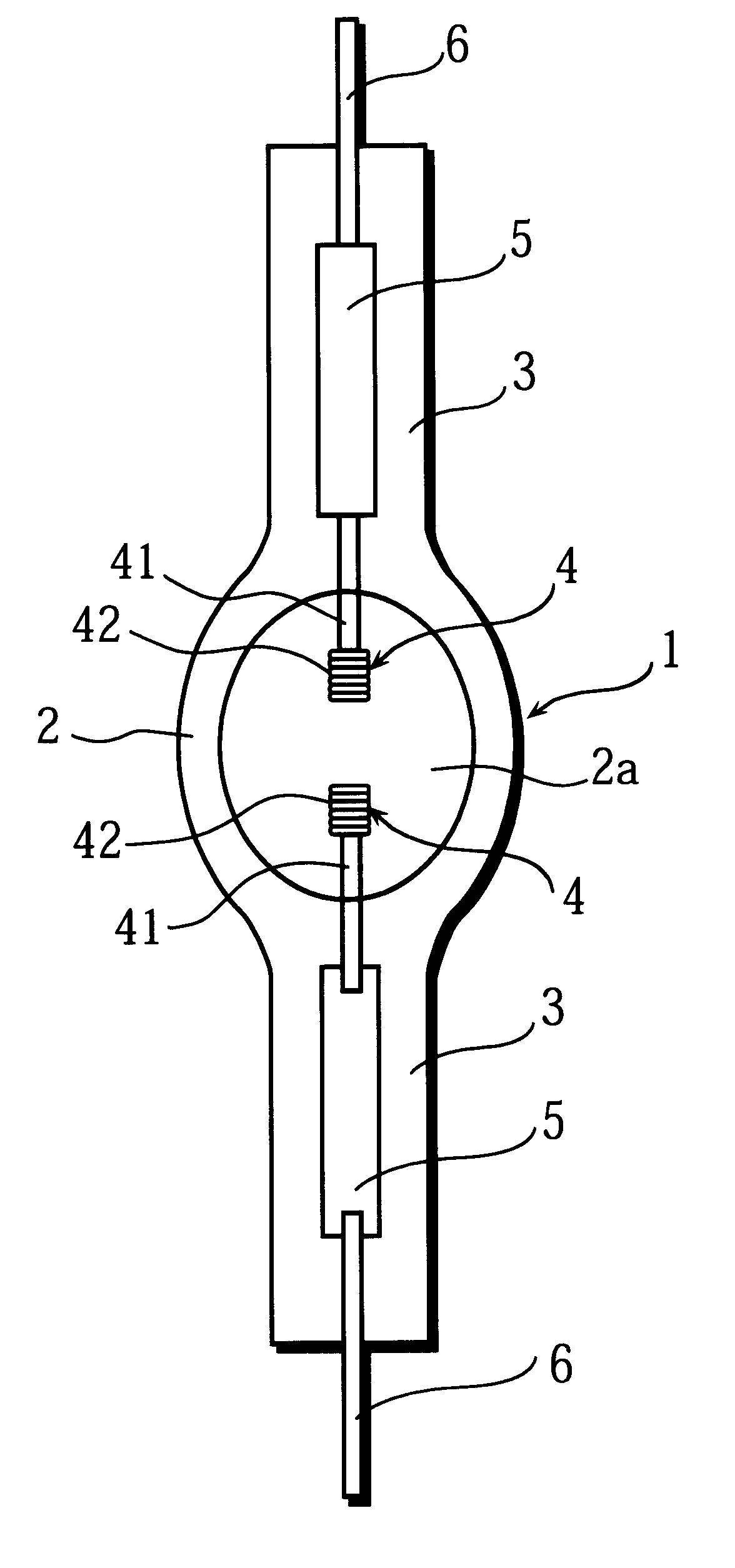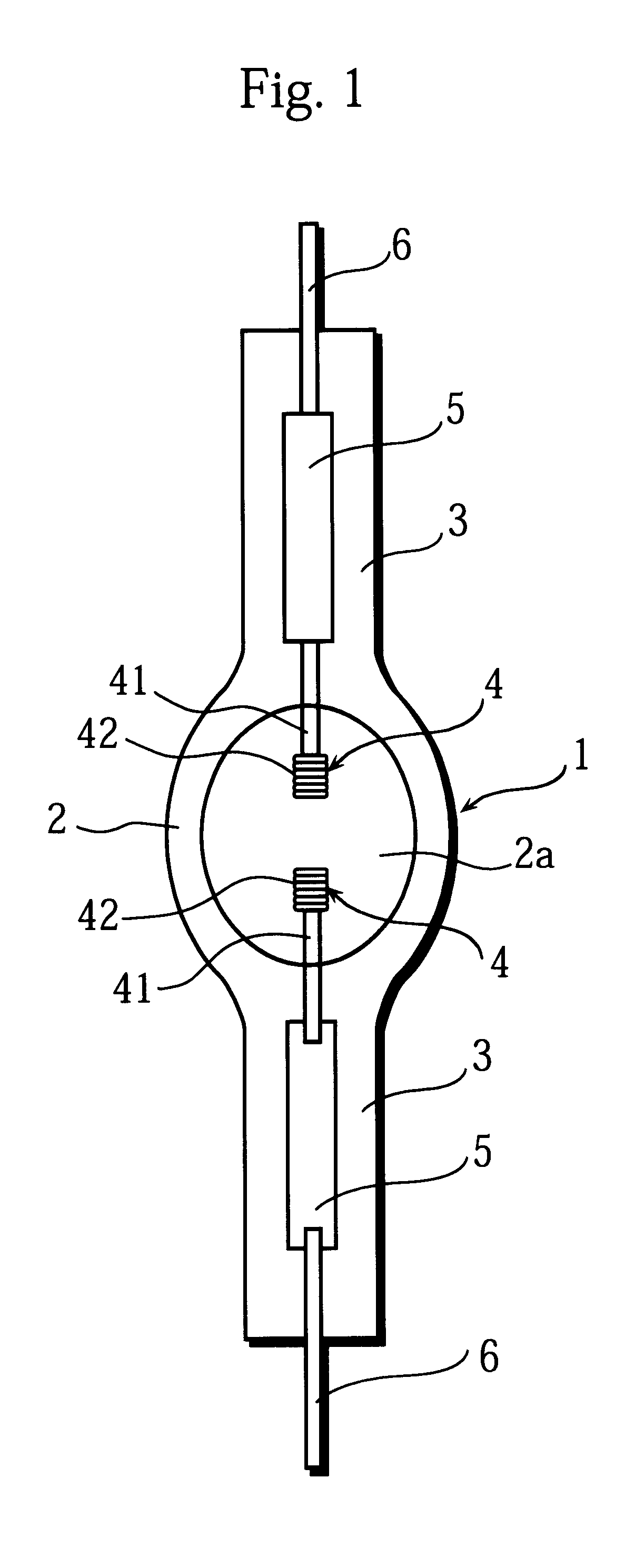High-pressure mercury lamp
a high-pressure mercury and discharge lamp technology, which is applied in the direction of discharge tube luminescnet screens, identification means, instruments, etc., can solve the problems of long time for light flux to reach 90% of its stable state, and long light buildup time, so as to improve the life of the lamp and reduce the light buildup time. , the effect of excellent luminous efficiency
- Summary
- Abstract
- Description
- Claims
- Application Information
AI Technical Summary
Benefits of technology
Problems solved by technology
Method used
Image
Examples
first embodiment
FIG. 1 is a front view of a high-pressure mercury lamp 1 of the first embodiment of the present invention. As shown in this figure, the high-pressure mercury lamp 1 is composed of a tube 2 with a pair of sealing parts 3, a pair of electrodes 4, and so on. The tube 2 is made of quartz glass, with its middle part in the direction of the length being spheroid. The maximum internal diameter of the central part of the tube 2 is 7.0 mm, the capacity of the tube 2 is 240 mm.sup.3, and the wall thickness is 2.5 mm. A sealing part 3 is provided at both ends of the tube 2.
In a discharge space 2a of the tube 2, 36 mg of mercury (about 0.16 mg / mm.sup.3), 9.0.times.10.sup.-5 .mu.mol / mm.sup.3 of bromine (Br) as a halogen substance, and an appropriate amount of xenon gas (which will be described later) are sealed.
A pair of electrodes 4 is provided in the discharge space 2 a of the tube 2. Each electrode 4 has an electrode rod 41 and an electrode coil 42 provided at the tip of the electrode rod 41,...
second embodiment
The following is a description of a high-pressure mercury lamp 60 of the second embodiment.
FIG. 5 is a front view of the high-pressure mercury lamp 60. The high-pressure mercury lamp 60 is a direct-current (DC) type lamp. As shown in FIG. 5, a cathode 18 and an anode 21 are provided in a discharge space 2a. The cathode 18 includes an electrode coil 17 and an electrode rod 16, the electrode coil 17 being wound around the end of the electrode rod 16 leaving 0.75 mm at the tip of the rod 16 uncovered. The anode 21 includes an electrode tip 20 and an electrode embedding rod 19, the electrode tip 20 being set on the tip of the electrode embedding rod 19. The electrode embedding rod 19 is 0.4 mm in the outer diameter. The electrode tip 20 is made of tungsten whose content of potassium oxide is 5 ppm or less, and is 1.8 mm in the maximum outer diameter and 0.7 mm in the tip-end diameter. The high-pressure mercury lamp 60 is lit up through the application of a DC voltage between the cathode...
PUM
 Login to View More
Login to View More Abstract
Description
Claims
Application Information
 Login to View More
Login to View More - R&D
- Intellectual Property
- Life Sciences
- Materials
- Tech Scout
- Unparalleled Data Quality
- Higher Quality Content
- 60% Fewer Hallucinations
Browse by: Latest US Patents, China's latest patents, Technical Efficacy Thesaurus, Application Domain, Technology Topic, Popular Technical Reports.
© 2025 PatSnap. All rights reserved.Legal|Privacy policy|Modern Slavery Act Transparency Statement|Sitemap|About US| Contact US: help@patsnap.com



